White Wine Vinification
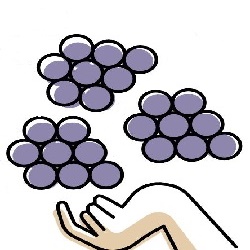
| HarvestingWhite grapes are harvested and sorted. |
CrushingHarvested grapes are crushed to release the must. | |
PressingPressing separates the juice from the skins, seeds, and stems. | |
FermentationYeasts transform the white grape juice into wine (sugar into alcohol). | |
MaturationMaturation refers to the time after fermentation. | |
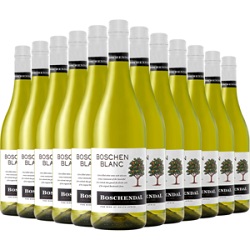
| AgingAging refers to the changes in wine after bottling. |
Level 1
This a simplified description of how to make a white wine.
A more complete description is found in Level 2.
Harvesting
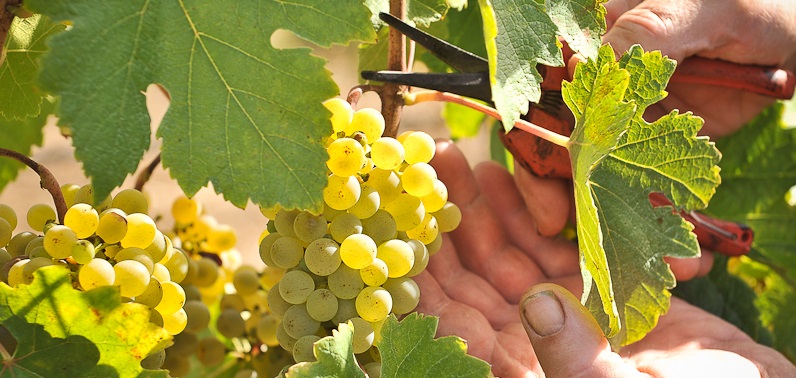
The best quality wines are produced from hand-picked grapes
The first step to produce a white wine, is to harvest white grapes.
Common white grapes are: Chardonnay, Sauvignon Blanc, and Riesling.
Sorting
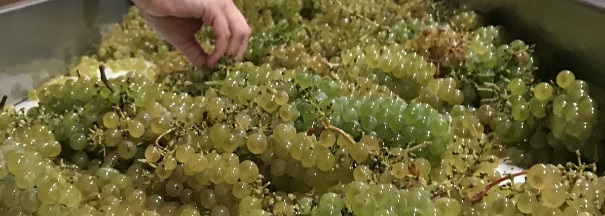
Sorting grapes before crushing
After harvesting, grape clusters are sorted for quality.
Unripe, diseased, and damaged grapes, bugs and leaves are removed.
Crushing
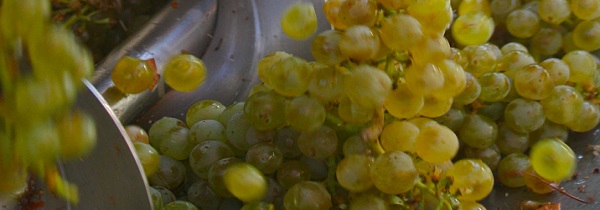
Grapes are crushed to release the must
"Vinum mustum"="Young wine"
After sorting, the grapes are crushed to crack the skins and release the must.
Must is the crushed grape juice that contains flesh, skins, seeds, and stems.
Pressing

Pressing is the major difference between white and red wines
Pressing separates the liquid from the solids (skins, seeds, stems).
White wines are pressed before fermentation to avoid contact with the solids.
Red wines are fermented with the solids and pressed after fermentation.
Alcoholic Fermentation
Alcoholic Fermentation is the transformation of grape juice into wine (sugar into alcohol).
In this process, yeast transforms fructose and glucose in the juice to ethanol, CO2, and heat:
=
White wines are most often fermented in stainless steel tanks. This does not add ekstra aromatic compounds to the wine.
Malolactic frementation converts citrus and herb tones into butter, hazelnut, and bread.
Fermentation in oak barrels adds secondary flavors (vanilla, cedar, smoke).
Maturation
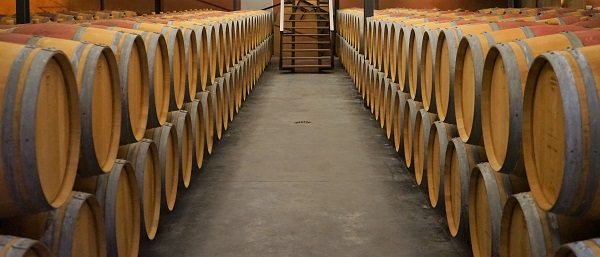
Maturation refers to the period after Fermentation before Bottling
Maturation refers to a period of time after Fermentation and before Bottling. During this time the wine goes through changes: blending, MLF, clarification, stabilization etc.
The wine color progressively changes to darker tones: from green to yellow straw to gold and the grape-derived aromas fade.
Aging
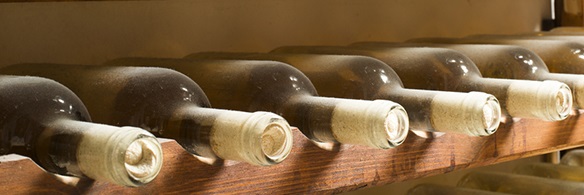
Aging refers to the changes in wine after bottling.